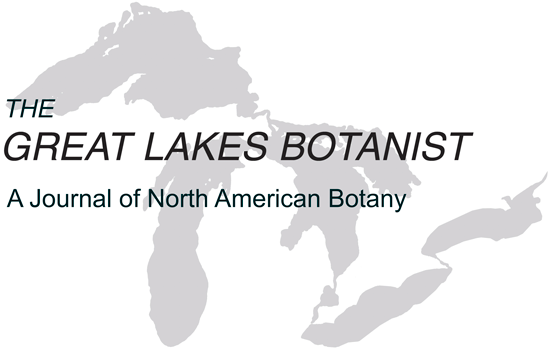ï~~2006
THE MICHIGAN BOTANIST
197
THE FIRST OCCURRENCE OF THE
CHRYSOPHYTE ALGA AMPHIRHIZA EPIZOOTICA
FROM NORTH AMERICA
Daniel E. Wujek
Department of Biology
Central Michigan University
Mt. Pleasant, MI 48859
INTRODUCTION
There are numerous genera of golden-brown algae (Chrysophyta, Chrysophyceae) living in freshwater habitats. Reports of their distribution had been
scattered throughout the algal literature for a long time, but only recently have
these been summarized for North America (Nicholls & Wujek 2003).
This paper reports the occurrence of the chrysophycean alga Amphirhiza
epizootica Skuja in Michigan, a species first described from Sweden (Skuja
1948).
METHODS AND MATERIALS
Phytoplankton samples containing Amphirhiza were collected with a 20 m plankton net from
Green's Lake, Beaver Island, Charlevoix County, Michigan, in September 1969, July 1970, and again
in August 1977. Observations using a Zeiss Photoscope II were made both from freshly collected
material, and from short term cultures grown in soil water extract or Bold's Basal Medium (Bold
1967) with additional soil water extract. Attempts to maintain cultures for extended periods failed;
cultures no longer survive.
Green's Lake is dystrophic with an average depth of one meter. Approximately 88% of the lake
is bordered by a Sphagnum bog. The pH of the lake's water ranges from 5.6-5.9. Water chemistry
data include: hardness 5-10 mg/l, phosphates 0.03 mg/l, dissolved oxygen 5.4-10 mg/l, and no detectable nitrates. More detailed data are available in Griffith (1978) and Benjamin (2006).
RESULTS AND DISCUSSION
Amphirhiza epizootica has not been observed since its original description
from Sweden (Skuja 1948). This report is its first for North America. Other authors who have written about this organism mention only Skuja's report without
adding any new locations (Bourrelly 1957, 1981; Starmach 1986).
Amphirhiza epizootica Skuja was detected growing attached to the rotifer
Collotheca sp. in plankton samples taken from Greene's Lake, Beaver Island,
Charlevoix County (Figs. 1-3). Skuja's (1948) original description of this alga
also illustrated the same genus of rotifer as the substrate. Of the more than 50
sessile Collotheca species, most live in a clear, gelatinous tube; only five are
free-swimming and lack the gelatinous tube (Edmondson 1959). Because my
samples were collected with a plankton net dragged through aquatic vegetation,
0


